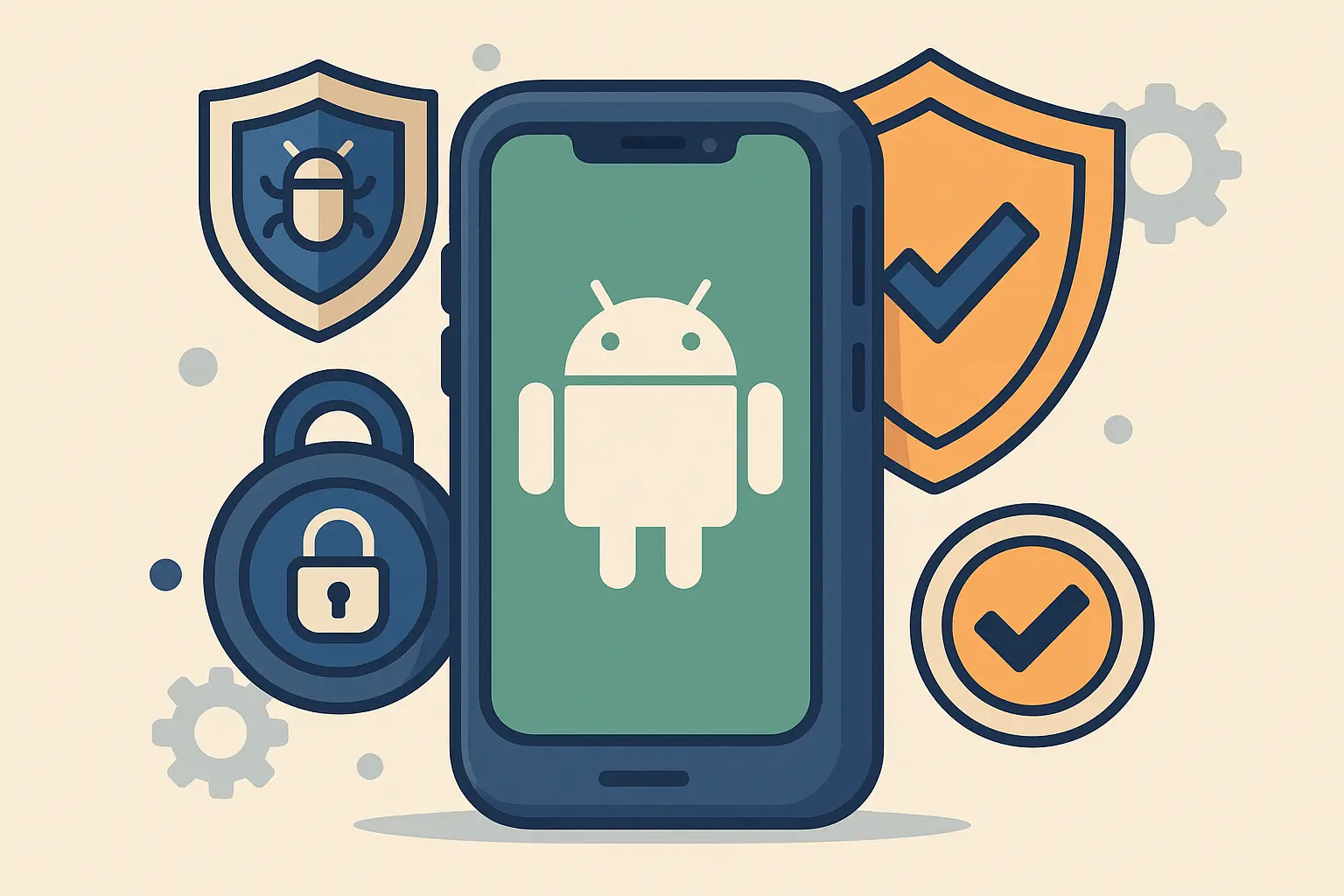Three months ago, I was that guy who rolled his eyes at friends obsessing over phone security. "Google's got this covered," I'd say, waving off their concerns about antivirus apps. Then I got a $2,400 credit card bill for purchases I never made.
Turns out, a banking app I downloaded from what looked like the official Play Store was actually malware in disguise. It had been quietly collecting my login credentials for weeks. Google Play Protect? It never caught a thing.
That wake-up call sent me down a rabbit hole of mobile security research. Here's what I learned about protecting your Android phone – and why the free options might be better than you think. Recent research shows that most of the free Android antivirus apps I tried didn't work well according to SafetyDetectives, but the few that do work properly can make all the difference between a secure phone and a compromised device.
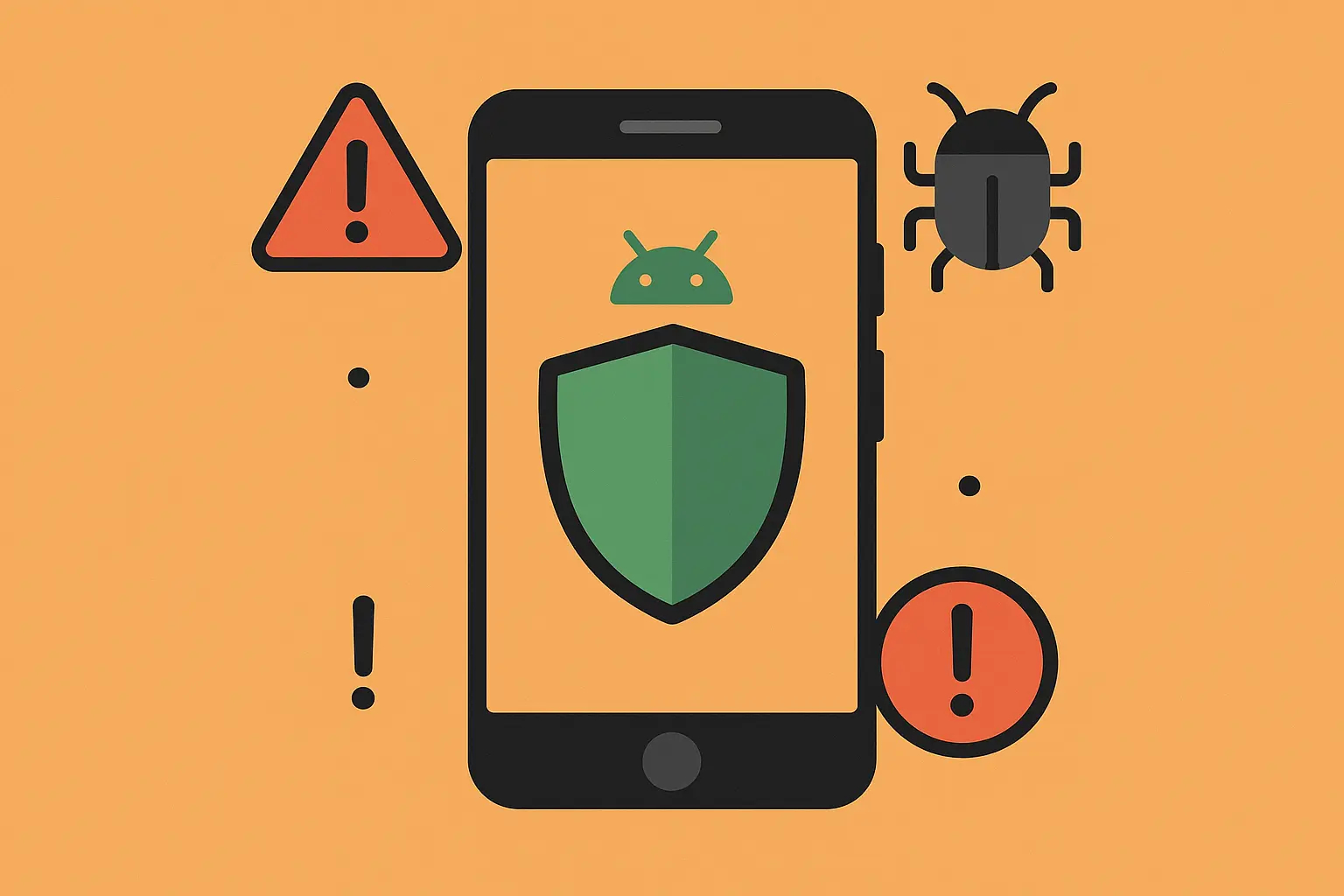
Table of Contents
The Hard Truth About Android's Built-In Security
Why Free Antivirus Actually Works (When You Pick the Right One)
The Two Apps That Actually Impressed Me
Setting It Up So It Actually Protects You
Keeping Your Phone Secure Without Going Crazy
The Features You Didn't Know You Needed
Why Your Phone Case Matters More Than You Think
What I'd Do If I Were Starting Over Today
TL;DR
Google Play Protect misses way more threats than Google wants you to know
Most free antivirus apps are garbage, but AVG and Bitdefender actually work
Setup matters more than which app you choose – most people skip the important stuff
Your antivirus is just one piece of the puzzle – common sense still beats everything
A broken phone can't run security updates – physical protection matters too
Ten minutes of monthly maintenance beats hours of damage control later
The Hard Truth About Android's Built-In Security
Look, I get it. Google is a tech giant with unlimited resources and some of the smartest security engineers on the planet. It's natural to assume they've got mobile security figured out. I believed that too, until reality smacked me in the face.
The problem isn't that Google's security is bad – it's that it's designed to catch the obvious stuff while sophisticated attackers are playing chess. Google Play Protect works great against malware that's already been reported thousands of times. But cybercriminals aren't stupid. They design new variants specifically to slip past Google's detection.
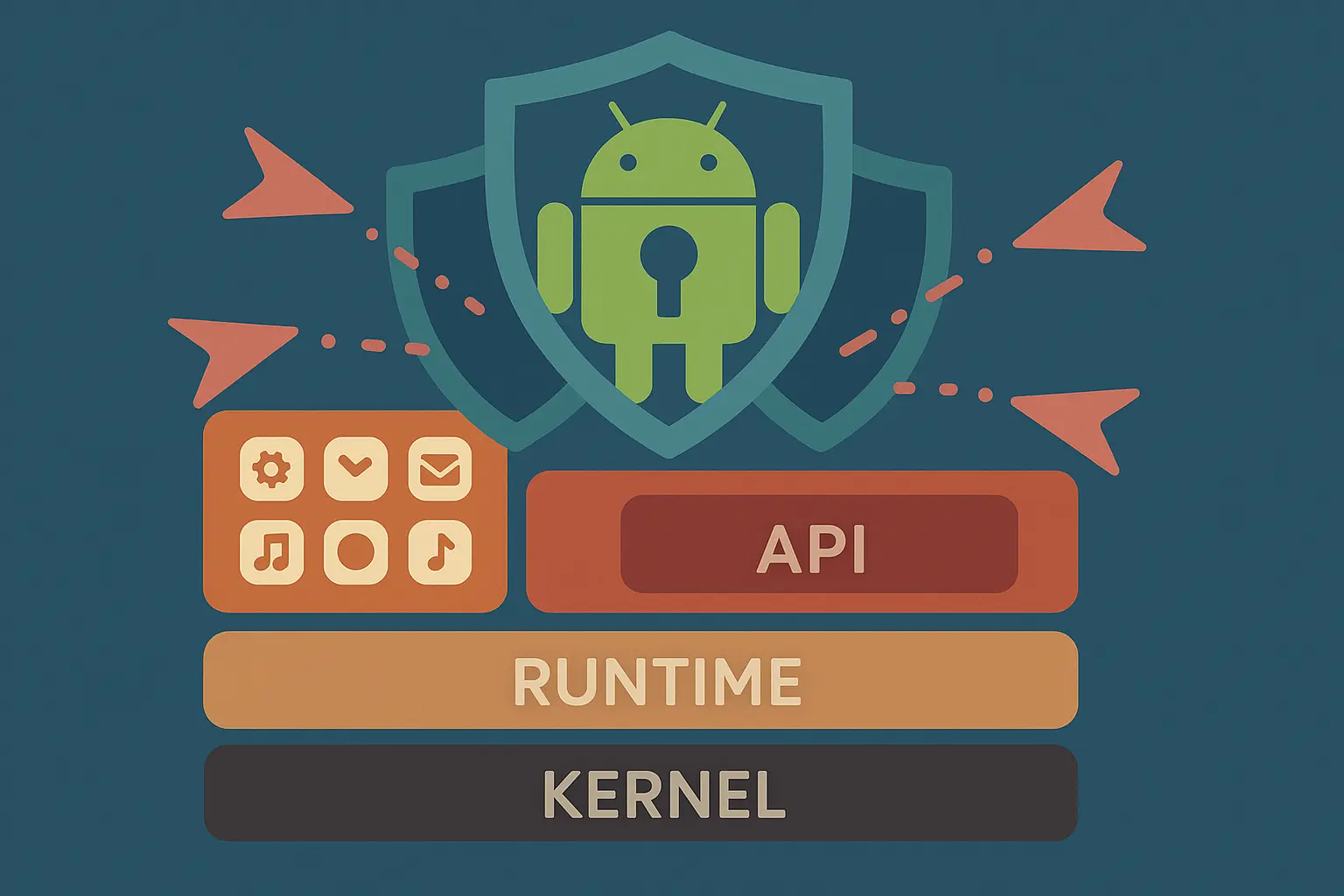
Here's what your phone already does: Play Protect scans apps before and after installation, checking them against Google's database of known threats. App sandboxing keeps malicious apps contained. Permission controls let you decide what apps can access.
These features work fine against amateur-hour malware. The problem is professional cybercriminals who know exactly how these systems work and design attacks to slip through the cracks.
Google Play Protect - Better Than Nothing, But That's Not Saying Much
According to ZDNet's testing, Malwarebytes says that the recorded volume of mobile-related malware targeting Android smartphones has jumped by 151% since the start of 2025. Meanwhile, Play Protect is still using the same basic detection methods it's used for years.
I've watched Play Protect completely miss banking trojans that steal SMS verification codes, spyware that records everything you type, and fake apps that look identical to legitimate ones. The app that got me? It passed Play Protect's scan with flying colors because it was a perfect clone of a real banking app – just with some extra code that sent my login details to criminals.
Play Protect compares apps against Google's threat database. When it finds a match, it blocks installation. The issue is timing – by the time Google identifies a new threat and updates their database, thousands of people might already be infected.
The Threats That Keep Security Experts Up at Night
Modern Android malware is scary good at hiding. I'm talking about banking trojans that intercept your two-factor authentication codes, spyware that silently records your passwords, and ransomware that encrypts your photos and demands payment.
These aren't theoretical threats from some distant future. They're actively targeting Android users right now. The antivirus industry tracks thousands of new Android malware variants every month, specifically designed to evade Google's detection.
The fake banking app that got me looked perfect – correct branding, professional interface, even fake customer reviews. The only difference was where my login credentials ended up. Most people would never notice until it was too late.
Text message phishing has gotten incredibly sophisticated too. I've received messages that appear to come from my wireless carrier, complete with official-looking links about urgent account problems. These often lead to fake websites that steal credentials or install malware directly.
Why Android's Design Leaves Gaps
Android runs on thousands of different devices from dozens of manufacturers, each adding their own modifications. This fragmentation means security updates take months to reach most devices – if they arrive at all.
I've seen phones running Android versions that are three years old with dozens of known security vulnerabilities. The manufacturers stopped providing updates, but the phones work fine for basic tasks. Users don't realize they're carrying devices with gaping security holes.
Even when updates are available, many people postpone installing them. This creates a massive pool of vulnerable devices that attackers can exploit with known techniques.
Why Free Antivirus Actually Works (When You Pick the Right One)
After my credit card incident, I tested seven different free antivirus apps over two months. Most were garbage – they either missed obvious threats or constantly pestered me with upgrade prompts. But two actually impressed me.
The antivirus industry has invested heavily in mobile security over the past few years. What started as basic malware scanners have evolved into comprehensive security suites. The free versions now include features that were premium-only just a few years ago.
Recent developments show why this matters. As reported by ZDNet, Google is taking 'legal action' against the BadBox 2.0 botnet which specifically targets Android devices. Even tech giants are struggling to keep up with evolving mobile threats.

Modern free antivirus apps use cloud-based detection engines that identify threats in real-time. They monitor app behavior, scan downloads, and block malicious websites before they can compromise your device. The protection goes far beyond what Android's built-in security provides.
Think of it like this: Google builds Android to work on billions of devices with countless different use cases. Antivirus companies focus specifically on security threats. They can respond faster to new threats and implement more aggressive detection methods.
The Two Apps That Actually Impressed Me
AVG - The Reliable Workhorse I Keep Coming Back To
I've been using AVG on various devices for over two years, and it consistently catches threats that other solutions miss. The app updates its virus definitions multiple times per day, and the interface is straightforward enough for anyone to use.
What impressed me most about AVG is its consistency. Some antivirus apps work great initially but become sluggish over time. AVG maintains steady performance without requiring constant attention.
The real-time scanning monitors every file that enters your device – downloads, email attachments, app installations. When AVG detects a threat, it immediately quarantines the file and alerts you. This happens automatically without interrupting normal phone usage.
Web protection is where AVG really shines. It maintains a constantly updated database of malicious websites and blocks access before you can accidentally visit them. I've had AVG block fake banking sites and phishing attempts that looked completely legitimate.
During my testing, AVG typically used less than 2% of total battery life during normal operation. The app performs intensive operations when your phone is charging, minimizing impact on daily usage. The initial setup takes 30-45 minutes, but after that it operates efficiently.
Bitdefender - When You Need the Heavy Artillery
Testing shows impressive results, with Bitdefender Mobile Security earning 4.7 stars on Google Play and a solid customer base according to ZDNet's comprehensive review.
What sets Bitdefender apart is its use of machine learning and behavioral analysis. Instead of relying solely on virus signatures, it analyzes how apps behave and flags suspicious activities. This approach catches zero-day threats that haven't been seen before.
The free version includes features that many competitors reserve for premium offerings – comprehensive malware protection, web security, and privacy monitoring. The interface is clean and professional.
Bitdefender's cloud-based approach means your device doesn't need massive virus definition databases locally. The servers analyze suspicious files and provide real-time threat intelligence. This keeps the app lightweight while providing current threat information.
This technology proved its worth when I encountered a banking trojan that had been modified to avoid traditional detection. Bitdefender flagged the app based on suspicious behavior patterns, even though it wasn't in any virus database yet.
The privacy monitoring goes beyond basic permissions to analyze what apps actually do with collected data. It tracks network communications and flags apps that send personal information to suspicious servers.
Why I Don't Recommend the Others
Avast offers more features in its free version than most competitors, including Wi-Fi security scanning and photo vault protection. The antivirus protection itself is solid. The downside is constant promotional messaging and upgrade prompts that become annoying during daily use.
However, users should be aware that in February, the U.S. Federal Trade Commission a refund process for Avast Antivirus customers concerning an alleged deceptive marketing practice surrounding the sale of user data, as reported by ZDNet.
Kaspersky's free antivirus focuses on core security functions with exceptional detection accuracy and very few false positives. The interface is minimalist and efficient. But the free version has significantly fewer features compared to premium offerings, and some users may want more comprehensive protection.
Setting It Up So It Actually Protects You
Here's where most people screw up. They download the app, run a quick scan, and assume they're protected. This approach leaves major security gaps that attackers can exploit.
I've helped dozens of friends install antivirus apps, and I see the same mistakes repeatedly. Proper setup ensures all security features are activated, scanning schedules work with your usage patterns, and notifications alert you about real threats without becoming annoying.
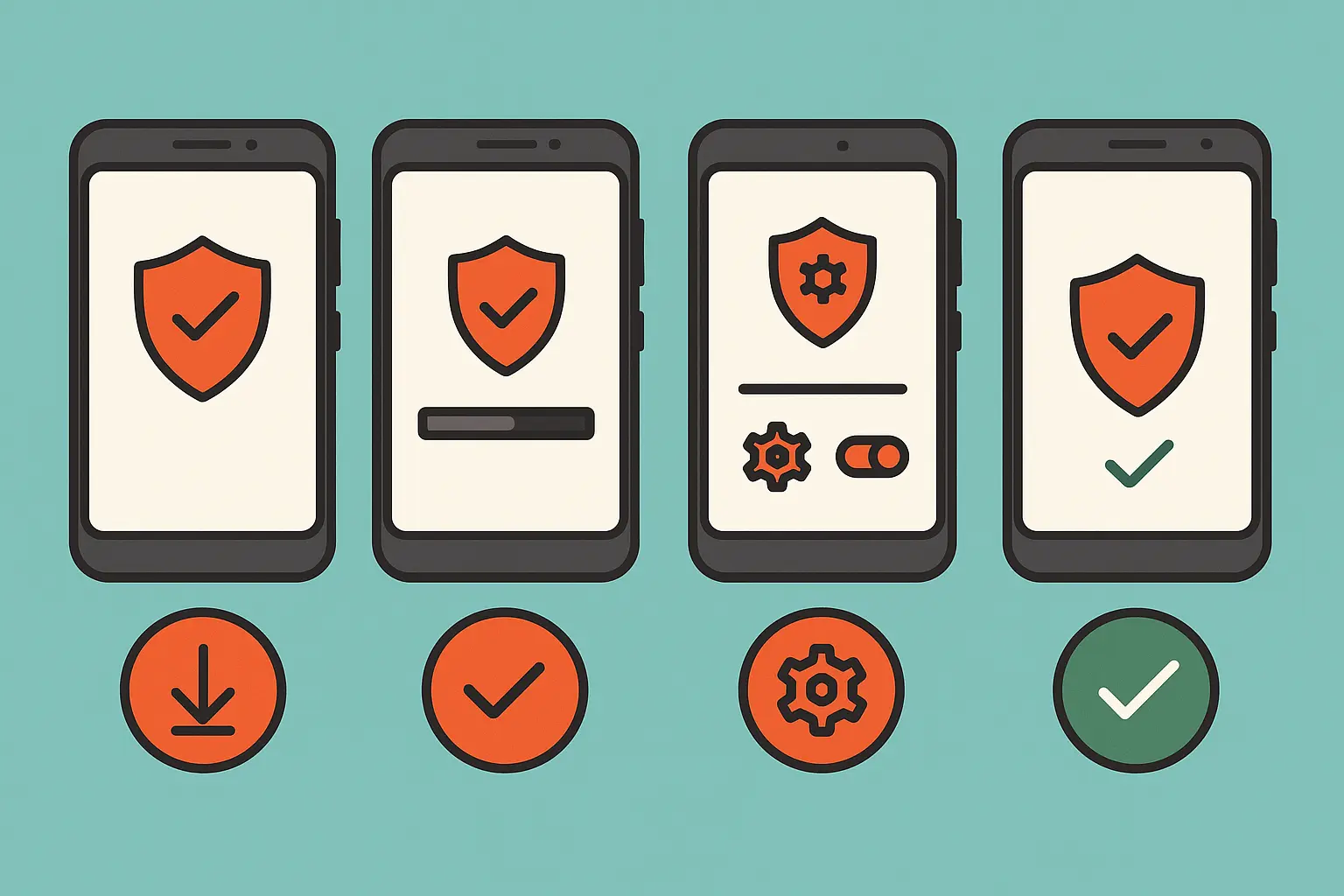
Before You Download Anything
Preparation prevents conflicts with existing security software and ensures your device has adequate resources to run antivirus effectively.
Check available storage space – you need at least 500MB free. Antivirus apps need room for virus definition updates, quarantined files, and temporary scanning files. Running out of space during a scan can corrupt the process.
Review currently installed security apps for conflicts. I've seen cases where two antivirus apps fight over system resources, causing both to malfunction and leaving the device completely unprotected.
Disable any existing third-party security apps before installing your new solution. This prevents resource conflicts and ensures the new app can properly integrate with your system.
Getting the Real Deal (Not a Fake)
Always download from official sources and verify developer credentials. I once helped a friend who downloaded "BitDefender Mobile" from a third-party store. The fake app had similar branding but was actually malware that stole his banking information.
Fake antivirus apps are surprisingly common and often rank highly in search results on unofficial app stores. These malicious apps mimic legitimate security software while secretly installing malware or stealing personal data.
The real Bitdefender shows "Bitdefender" as the developer, not variations that might seem legitimate. Always verify the developer name matches exactly.
The Settings That Actually Matter
Default settings work for basic protection, but personalizing them based on how you actually use your phone significantly improves both security effectiveness and user experience.
I schedule full system scans for 3 AM when my phone is charging and I'm definitely not using it. This ensures comprehensive scanning without impacting performance during work or entertainment time. Quick scans can run during lunch breaks or other short idle periods.
Real-time protection sensitivity requires careful balancing. High sensitivity catches more threats but generates false positives that block legitimate apps and websites. Low sensitivity reduces interruptions but might miss sophisticated attacks.
Setting Category |
My Recommendation |
Why It Works |
Performance Impact |
|---|---|---|---|
Real-time scanning |
Enable with medium sensitivity |
Catches threats as they arrive |
Low |
Scheduled scans |
Weekly during charging hours |
Regular deep cleaning |
None during use |
Web protection |
Enable with whitelist for trusted sites |
Blocks malicious URLs |
Minimal |
Notifications |
Critical alerts only |
Reduces interruption |
None |
Auto-updates |
Enable during Wi-Fi only |
Keeps protection current |
Low |

Keeping Your Phone Secure Without Going Crazy
Security isn't a one-time setup – it requires consistent attention to remain effective. But it doesn't have to consume your life. The most secure Android users I know treat antivirus as part of a broader strategy that includes regular updates, careful app management, and smart browsing habits.
Monthly maintenance takes about 15 minutes but can prevent security incidents that would take hours or days to resolve. These tasks become routine once you establish a schedule.
The Monthly Routine That Actually Works
Once a month, I spend ten minutes on phone hygiene: check for system updates, clear out apps I'm not using, and let the antivirus run a full scan overnight. That's it. Security doesn't have to be complicated.
System updates often include critical security patches that fix vulnerabilities discovered since your phone was manufactured. Delaying these updates leaves known security holes open for attackers to exploit.
App reviews should focus on applications you haven't used recently and those requesting excessive permissions. I've found apps I installed months ago and completely forgot about, some collecting location data and other personal information the entire time.
Permission audits help identify apps that might be overreaching in their data collection. An app that worked fine with limited permissions six months ago might have updated to request additional access you never explicitly approved.
Security Habits That Complement Your Antivirus
Human behavior remains the weakest link in most security systems. The best antivirus in the world can't protect you if you deliberately install malware or willingly provide passwords to cybercriminals.
Last month, I received a text message claiming to be from my bank asking me to "verify my account" by clicking a link. Even with antivirus protection, the safest approach was to ignore the text and call my bank directly. The bank confirmed it was a phishing attempt.
Mobile browsers make it harder to spot security indicators that would be obvious on desktop computers. URLs are truncated, security certificates are less visible, and smaller screens make it difficult to notice subtle differences between legitimate and fraudulent websites.
Backups serve two security purposes: they protect against data loss from malware attacks, and they give you confidence to take decisive action against threats. If ransomware encrypts your photos, having recent backups means you can wipe your device and restore clean data instead of paying the ransom.
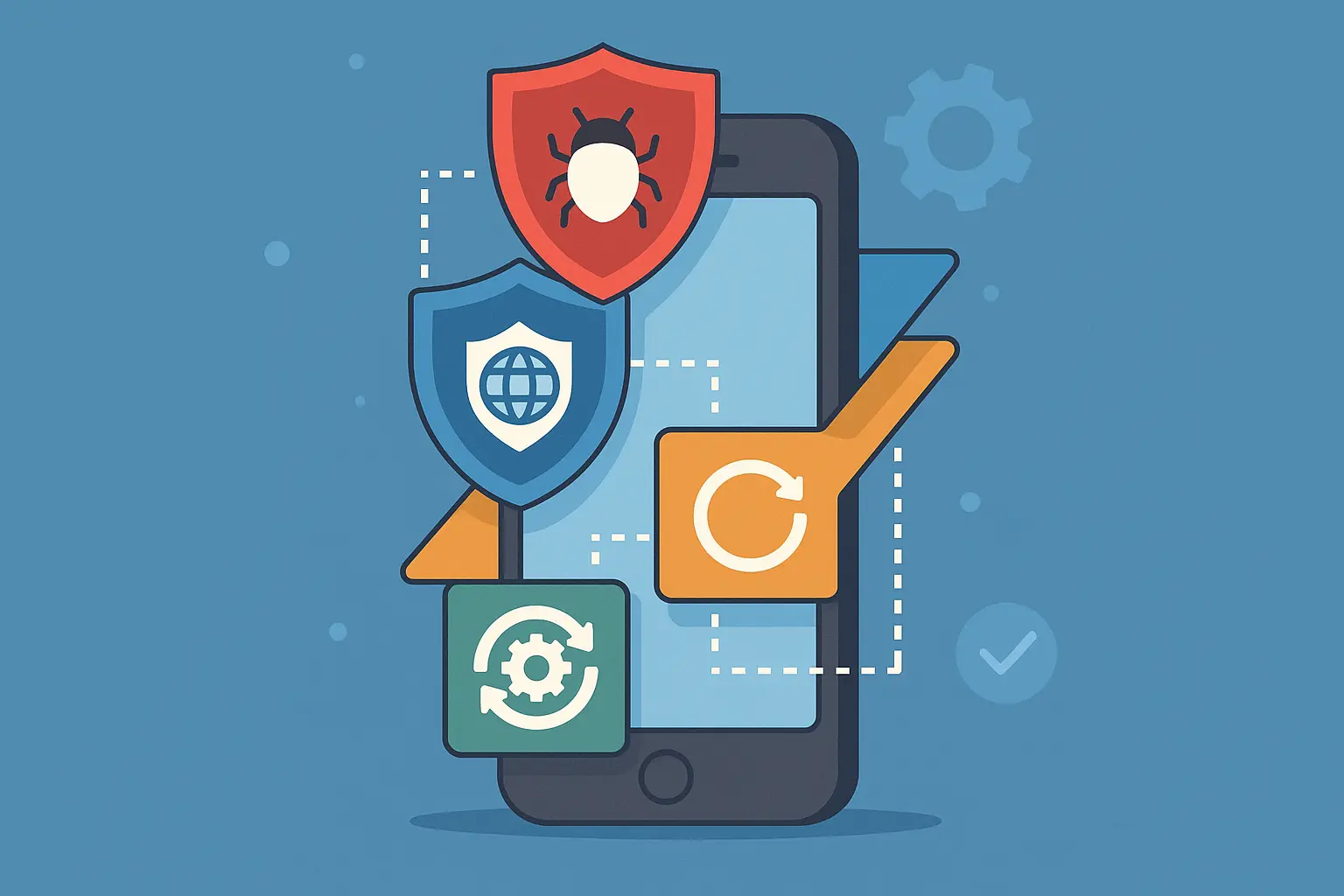
The Features You Didn't Know You Needed
Modern free antivirus apps pack in features that used to cost money – cloud scanning, behavioral detection, web protection. You're getting enterprise-level security without the enterprise price tag.
Traditional antivirus relied on virus signatures – unique code patterns that identified known malware. This worked when malware was simple and changed slowly. Modern threats use sophisticated techniques and change rapidly to avoid signature-based detection.
Current android antivirus apps use multiple detection methods simultaneously. Signature scanning catches known threats, behavioral analysis identifies suspicious activities, and cloud-based intelligence provides real-time information about emerging threats.
How Cloud Scanning Changed Everything
Think of cloud scanning like having a team of security experts constantly watching your phone from afar. When something suspicious happens, they can spot it instantly without draining your battery.
Cloud scanning offloads heavy computational work to remote servers with vastly more processing power than your phone. This allows for sophisticated analysis techniques that would be impossible to run locally without killing your battery and slowing down your device.
The cloud approach also enables instant updates when new threats are discovered. Instead of waiting for definition updates to download and install, your antivirus can immediately access information about the latest malware variants as soon as they're identified by security researchers.
Behavioral Detection vs. Traditional Scanning
Instead of just looking for known bad code, behavioral detection watches how apps actually behave on your device. If an app starts doing something suspicious – like accessing your contacts when it's supposed to be a flashlight – the system flags it immediately.
This approach catches zero-day threats that no one has seen before. A new banking trojan might use completely original code, but if it starts intercepting SMS messages and recording keystrokes, behavioral detection will spot the suspicious activity pattern.
The effectiveness is notable, with Norton's Android app detected all of the risky apps I had installed on my Samsung Galaxy during SafetyDetectives' testing, though this refers to premium solutions that set the benchmark for what free apps should aspire to achieve.
Automatic scanning runs continuously in the background, monitoring file system changes and network activity for signs of malicious behavior. This provides the best protection but uses more system resources throughout the day.
Manual scanning gives you control over when intensive security operations occur, allowing you to schedule them during convenient times when performance impact won't interfere with important tasks. The trade-off is potential gaps in protection if threats arrive between scheduled scans.
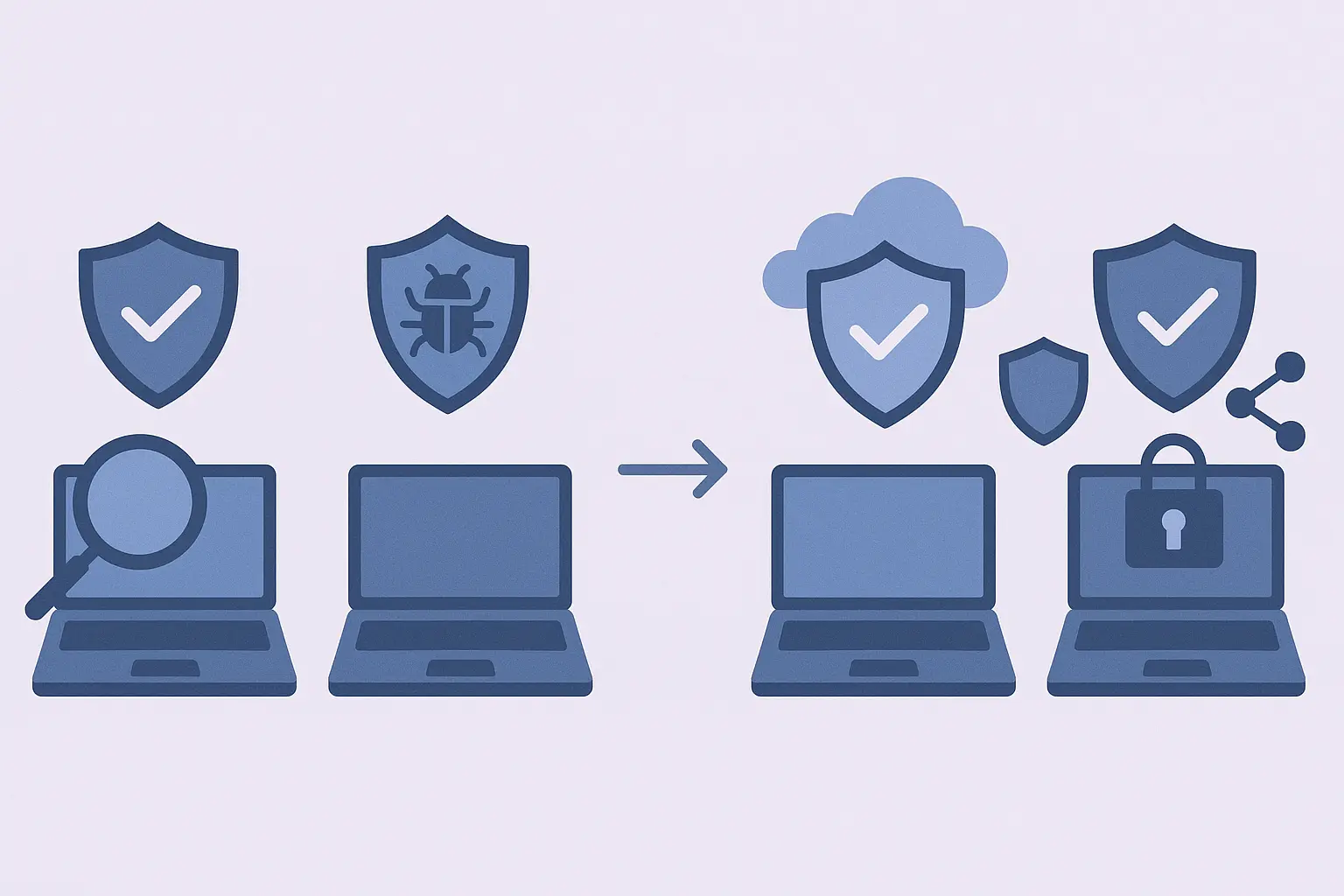
Why Your Phone Case Matters More Than You Think
Of course, the best antivirus can't help if your phone gets destroyed. I learned this the hard way when I dropped my phone hiking and had to use an old backup device with zero security updates for two weeks.
While antivirus software protects against digital threats, physical device protection is equally crucial for comprehensive mobile security. When your phone is damaged, you might be forced to use unsecured temporary devices or skip important security updates while dealing with repairs.
Understanding these security gaps is crucial, especially when considering the most protective phone cases that can safeguard your device from physical damage while your antivirus handles digital threats.
Rokform's rugged cases provide military-grade physical protection that shields your Android device from drops, impacts, and environmental hazards that could compromise your security setup. Their secure mounting systems enhance security by keeping your device safely attached during activities where drops are more likely.
Just as you maintain your antivirus software, consider how the best phone cases for construction workers provide ongoing physical protection that complements your digital security efforts.
For users who rely on their Android devices for work or store sensitive information, combining robust free virus protection for android with physical security creates comprehensive protection against both digital and physical threats. After all, the best antivirus software can't protect data on a phone with a shattered screen.
Consider pairing your antivirus solution with the toughest phone cases available to create a complete security ecosystem for your device.
Whether you're a professional who needs law enforcement phone cases or someone looking for the best magnetic cases for Android, pairing physical protection with quality antivirus software creates the ultimate security solution.
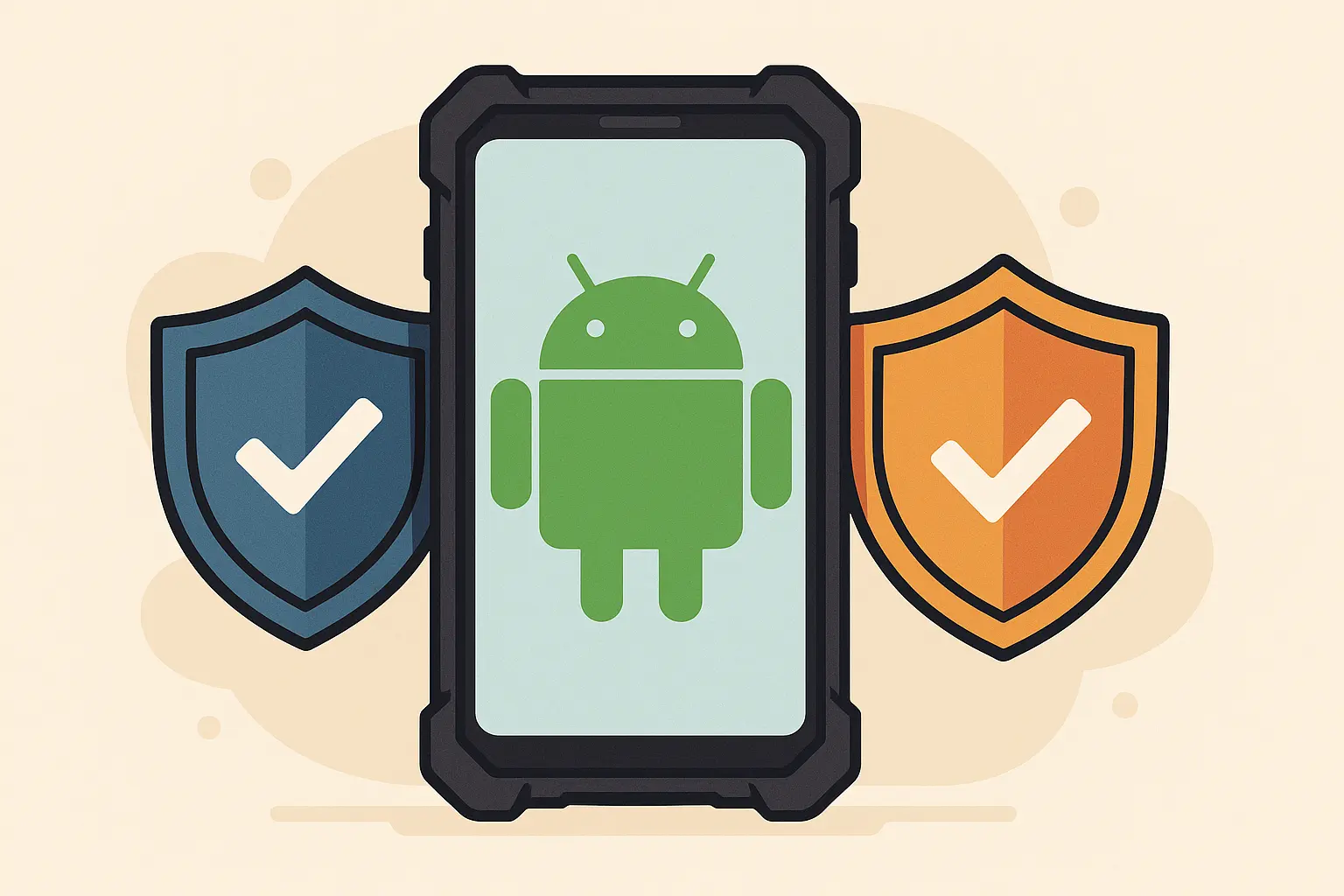
What I'd Do If I Were Starting Over Today
Here's my bottom line after months of testing and one expensive lesson: Android's built-in security isn't enough, but you don't need to spend money to fix it.
If you're just getting started with Android security, here's my honest recommendation: Download AVG, run the setup wizard, and schedule weekly scans for when you're sleeping. It's not perfect, but it's infinitely better than crossing your fingers and hoping Google catches everything.
For the more paranoid among us (and after my credit card incident, I count myself in this group), add Bitdefender for its behavioral detection. Yes, running two antivirus apps used to be a no-no, but these modern versions play nice together.
The mobile threat landscape will continue evolving, but the fundamentals remain constant: use reputable antivirus software, keep everything updated, practice safe browsing habits, and protect your device physically. These principles have kept my devices secure since my wake-up call.
Most importantly: trust your gut. If an app asks for weird permissions or a website looks sketchy, don't ignore that feeling. The best antivirus in the world can't protect you from your own bad decisions – believe me, I learned that the hard way.
Don't wait until you encounter a security incident to take mobile protection seriously. The few minutes you spend setting up proper antivirus protection today could save you hours of frustration and potentially thousands of dollars in damages later.
My experience with various free android antivirus solutions has taught me that consistency matters more than perfection. The mobile threat landscape is constantly evolving, but proper preparation and maintained vigilance will keep you ahead of most attacks.
Explore Rokform's protective cases to complete your mobile security strategy.
